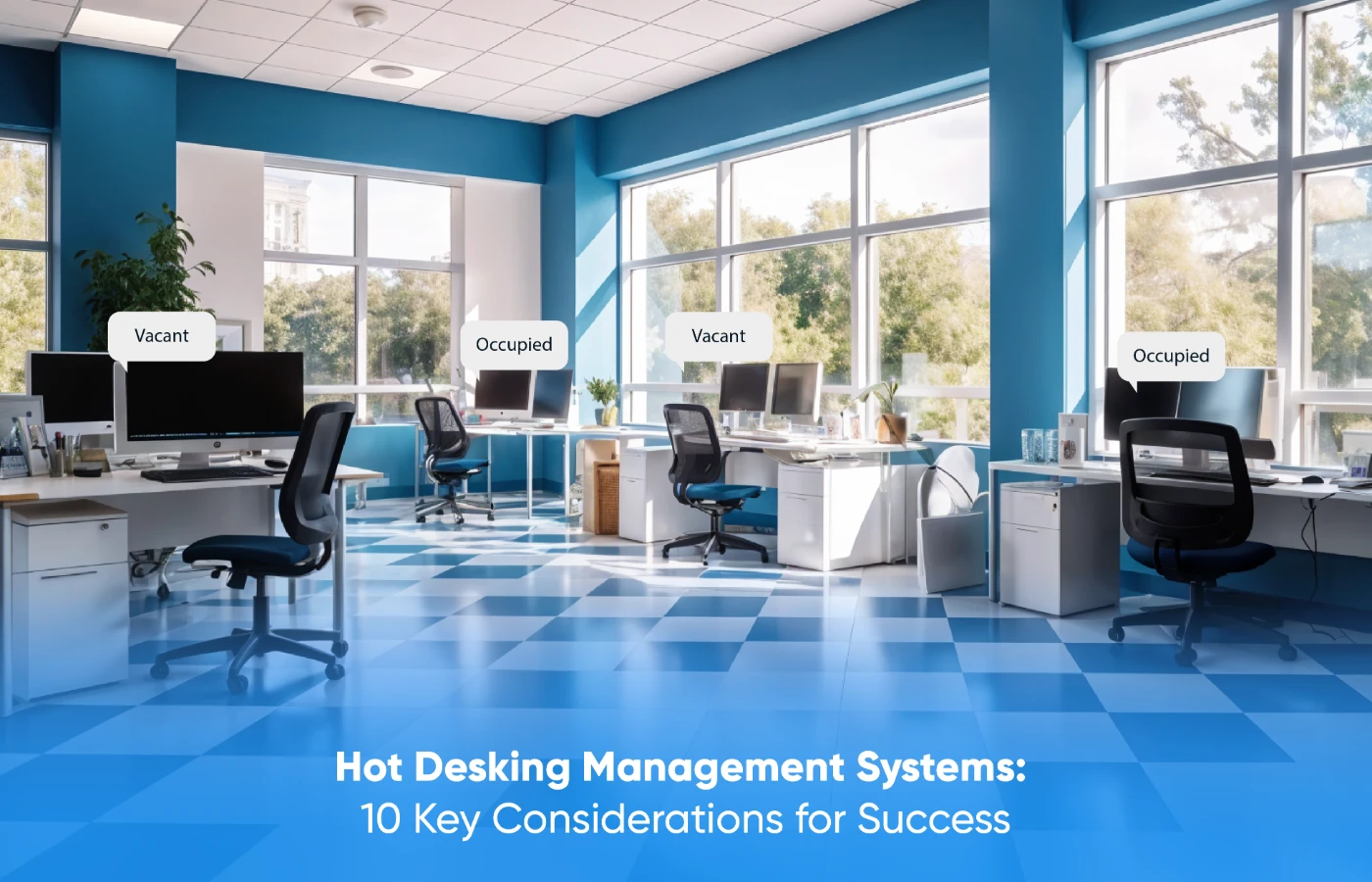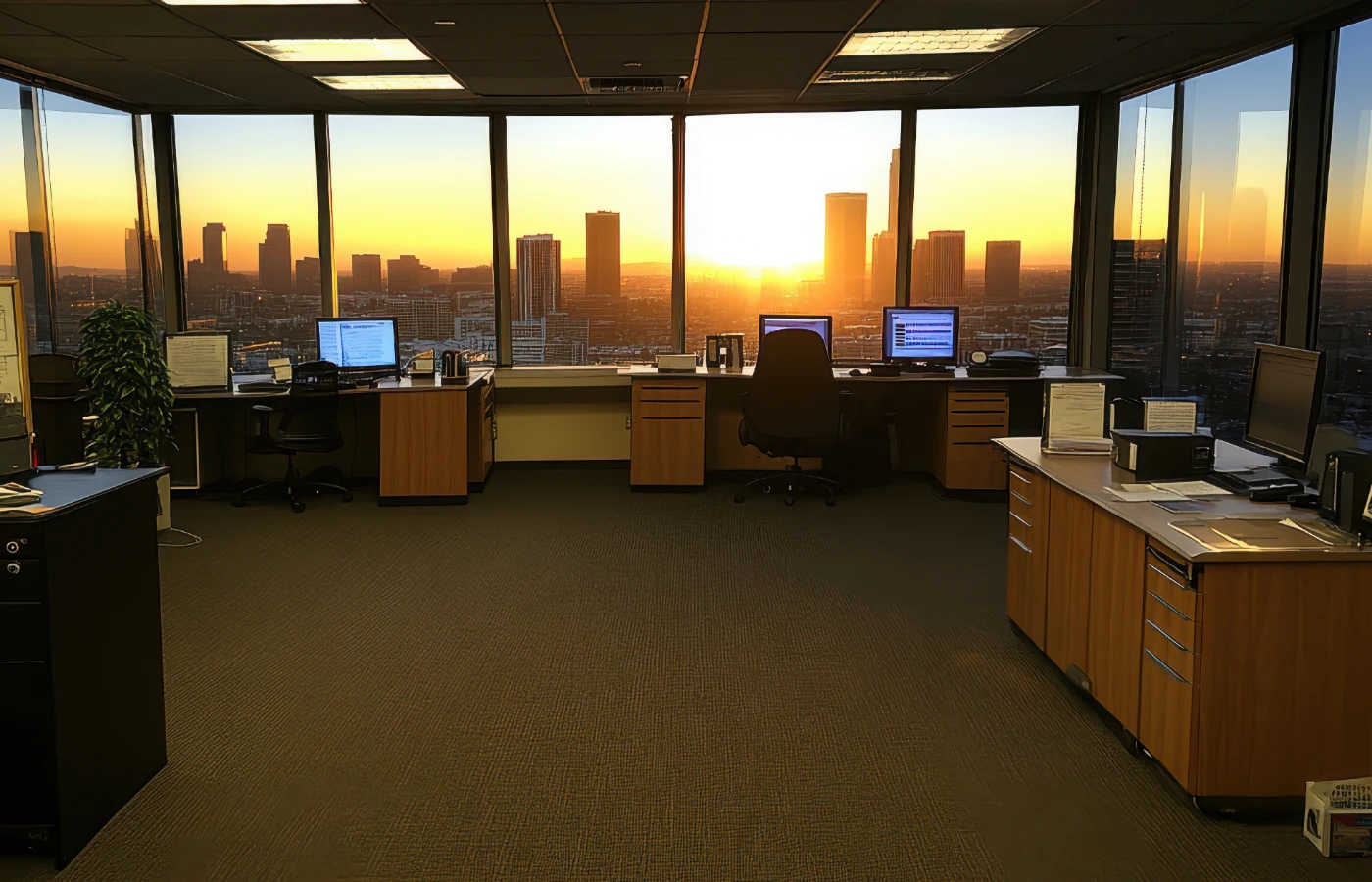Hot Desking Management Systems: 10 Key Considerations for Success

Introduction
In the past, offices were simple: desks were assigned to individuals, and each person had their own space. But as the world of work evolves, so do our workspaces. The rise of hybrid work models has led to hot desking, a dynamic solution where employees can work from any desk anytime. While the benefits are clear, successfully implementing a hot desking system isn’t always straightforward. The workplace of tomorrow is all about flexibility, and hot desking is leading the charge. But implementing this dynamic system comes with its challenges. How can businesses design a workspace that promotes collaboration, productivity, and employee satisfaction?
Hot Desking: Flexibility That Drives Productivity
What started as a cost-saving initiative has now become a game-changer for businesses looking to enhance productivity, creativity, and collaboration while reducing capital investment. Hot desking empowers employees by providing them with the freedom to choose a workspace that best suits their needs, fostering a more dynamic and efficient workplace. To ensure seamless adoption and maximum benefits, businesses must take a strategic approach to implementation.
Here’s a closer look at the 10 key factors that will help you select the right hot desking management system for your business.
1. Assessing Office Needs Before Implementing Hot Desking:
The need for personal office space varies across departments and employees, but hot desking can be structured to suit everyone. For teams requiring specific resources, businesses can implement zonal booking modules or customized hot desking setups to ensure efficiency. Before adopting a hot desking management system, it is essential to analyze workspace requirements using sensor analytics and employee feedback to create a flexible and productive environment. This approach helps businesses optimize space utilization and enhance the hybrid work model effectively.
2. Creating Flexible, Activity-Based Workspaces:
A hot desking management system goes beyond simply providing desks; it’s about designing flexible, activity-based spaces that cater to various work tasks and employee needs. By incorporating areas like quiet zones for focused work, single-person meeting rooms, touchdown spaces for quick tasks, and open workspaces for socializing, businesses can boost productivity. Adding collaboration spaces further promotes teamwork. Integrating these diverse environments into a hot desking system allows employees to select the ideal space, enhancing both individual performance and team collaboration.
3. Simplifying Hot Desking with Office Zones:
A non-structured floor plan with a free seating concept can cause disorientation and, therefore, may not be effective. Organize the office space into neighborhoods or zones based on departments or specific tasks. The structure makes it easier to find colleagues and work more effectively. Imagine your office as a network of smaller communities rather than a large area.

4. Preparing Workstations for Flexibility:
In a hot desking environment, employees move between workstations frequently, making it essential to have the necessary equipment readily available. Each desk should be clearly labelled with the available resources, such as monitors, docking stations, and ergonomic chairs, allowing employees to choose a workspace that meets their needs. Businesses should determine whether specific equipment will be permanently assigned to desks or provided on request based on job roles and tasks. A well-equipped workstation setup reduces downtime, improves efficiency, and ensures a smooth transition for employees.
5. Implementing Hot Desking the Right Way:
A well-planned hot desking management system ensures a smooth transition and an efficient workspace. Whether implementing hot desking across the office or in specific zones, the focus should be on employee adoption, system optimization, and seamless accessibility. Providing clear guidelines, training, and a user-friendly booking system helps employees adapt quickly and make the most of the flexible work environment. A structured approach to hot desking enhances productivity, maximizes space utilization, and ensures a collaborative, efficient workplace.
6. Effectively Communicate Office Changes to Employees:
To ensure smooth adoption the changes to the office environment should be communicated to the team in advance. Such changes in plans and new solutions would help prevent confusion and enable staff to prepare and discuss such issues openly with management. Encourage employees to share feedback on their workspace preferences and adjustments in new areas and zones.
7. Leverage Data for a Smarter, More Efficient Workspace:
Effective hot desking management requires continuous space monitoring, which can be achieved through various methods such as sensors, QR codes, kiosks, tablets with dynamic QR codes, or software-based tracking. These tools help analyze workspace usage, identify popular zones, and optimize desk allocation for maximum efficiency. By leveraging data insights, businesses can adjust collaboration zones, modify desk setups, and enhance workplace design without disrupting operations. Hot desking ensures employees have the flexibility, autonomy, and secure access they need for improved productivity.
Conclusion

Creating a flexible, efficient workspace is key to maximizing productivity and reducing capital costs, and hot desking management system plays a vital role in achieving this. Aastro Tech’s hot desking management system provides easy booking, effective storage, and data to keep operations running smoothly. By promoting flexibility, businesses enhance collaboration and foster a dynamic work culture.
Do you want to create a more flexible, efficient, and productive workspace? Aastro Tech’s hot desking management system makes it easy to optimize space, streamline desk booking, and enhance collaboration. Contact Aastro Tech today to explore!
FAQs:
1. Is hot desking flexible?
Yes, hot desking provides employees with the flexibility to choose their workspace daily and can also be zonalized based on specific requirements.
2. Does hot desking save office space?
Yes, it helps maximize office space by reducing the number of desks required for employees.
3. Is hot desking management system only for large offices?
No, it can work in offices of all sizes, especially with a mobile or hybrid workforce.
4. Is the Hot Desking Management System Suitable for All Departments?
Yes, hot desking management system is suitable for all departments, including IT and finance, as it can be tailored to meet specific requirements. With zonal booking options and hybrid work models, businesses can ensure a flexible and efficient workspace for every team.
5. How is privacy maintained with hot desking?
Most offices set up designated quiet areas or private meeting rooms for employees who need focused work or private conversations.
